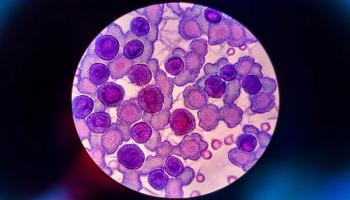
- Volume 0 0
Spreading the Truth About Migraine
Everyone occasionally experiences throbbing headache pain. Most of America's 45 million chronic headache sufferers1 self-medicate, seeking professional help only when debilitating pain suggests more serious concerns.
Primary and Secondary Headache
Headache pain does not originate in the bones or brain; both lack pain-sensitive nerve fibers. It generally emanates from tissues covering the brain, or the muscles and nerve network covering the scalp, face, and neck.
Primary headaches, such as tension and neurovascular headaches, are not associated with underlying medical conditions. Tension headaches, which account for 90% of headaches, are a severe, temporary form of muscle contraction. Neurovascular headaches, the most common of which are migraine headaches, involve neural blood vessel dysfunction.2
Secondary headaches occur consequent to another pathology. Causes may include temporal arteritis, sinusitis, medication, intracranial hemorrhage, and cerebrovascular ischemia.3
Migraine
For the approximately 32 million American sufferers,4 debilitating migraine causes 157 million lost workdays,2 and up to 40% of sufferers experience weekly episodes.5 Prevalence is estimated at 13%; it is highest between ages 30 and 49 and is greater for women (18%) than for men (6%).4,6 Although migraine decreases with age, late-onset migraine affects 1% to 2% of elders.7
Migraine may be classic or common. In classic migraine, positive aura (flashing or shimmering lights called scintillating scotoma) or negative aura (blind spots) precedes headache pain. Pain may last up to 72 hours,8 usually spreading from one side to the other. Common migraines lack auras.2 Approximately 45% of migraineurs experience at least one autonomic symptom (lacrimation, eye redness, photosensitivity, nasal congestion, eyelid swelling, rhinorrhea, etc).9
Studies suggest that 46% of migraine sufferers never consult a physician, and only 16% to 23% visit a physician annually.6,10 Reasons for not seeking treatment are often rooted in misinformation (Table 16,11).
Migraines appear to be the result of blood vessels overreacting to triggers, including certain foods, light glare, stress, crying, OTC medications, weather patterns, smoking, contraceptives, and many more.12 Constricting blood vessels decrease blood flow, thus diminishing oxygen supply and causing symptoms such as auras. In response, cerebral arteries dilate to enhance energy supply, releasing pain-producing prostaglandin and exciting pain-sensitive nociceptors.2 Migraine sufferers are thought to have an inherited abnormality in blood vessel regulation; 70% of migraineurs have family histories of migraines.12
With age, auras tend to disappear, presenting diagnostic challenges.7 In elders, migraine often presents as migrating neurologic symptoms (paresthesia, aphasia, weakness, disequilibrium, and vertigo) without typical head pain.3,9
Migraine headaches present in a fashion similar to sinus headache, transient ischemic attacks, and other serious conditions.2,3 Several red flags suggest serious underlying conditions:
- Severe pain with nausea, vomiting, or altered mental state
- Recent head injury
- Pain exacerbation with cough or straining
- One-sided pain and tenderness in the temple region
- Severe periorbital or forehead pain with visual distortions and eye redness2,3,13
Treatment
Migraines respond best when treated early. Treatment considerations include (1) comorbid conditions, (2) concurrent use of drugs contraindicated for migraine treatment, and (3) dose considerations. Nitroglycerin, isosorbide dinitrate, and methyldopa in particular are contraindicated for migraine patients.1
Treatment goals are twofold: abortive treatment to end acute symptoms and prevention. Triptans are used most often for abortive treatment. For the approximately 40% of sufferers unresponsive to triptans, other drugs affecting serotonin receptors are the next step (Table 2).12
Some patients respond to nonsteroidal anti-inflammatory drugs (NSAIDs), alone or in combination with caffeine, or opioid analgesics. NSAID use must be weighed against gastrointestinal risks. Cyclooxygenase-2 inhibitors can cause significant increases in blood pressure, which generally begin during the first 6 weeks of treatment. The sedative and cognitive effects of opioids limit their use to those who have exhausted other treatment options.3 Recently, botulinum toxin A has generated optimism as a potential migraine treatment. Following phase 2 clinical trials, the FDA has granted its manufacturer approval for phase 3 trials.14
Successful migraine treatment generally is tailored to the patient, using the steps outlined in Table 3.15
Across or Within?
Historically, step care across attacks was used: that is, with each subsequent headache attack, clinicians assessed the effectiveness of the patient's medications, then changed doses or agents. Additionally, step care within attacks was employed: prescribers gave patients multiple medications, advising them to step up to a stronger medication if less potent drugs proved ineffective. Some experts consider these approaches suboptimal.16
Increasingly, headache experts use stratified care. In this approach, clinicians work with patients, helping them determine which medication to use based on their pain intensity and disability. Despite its subjective nature, growing evidence indicates that this approach is effective for patients who have insight into their pain.16
Prevention
Identifying and avoiding triggers is key to prevention. Using a headache diary to track frequency, pain location, severity, and medication use and response for 4 months helps tremendously.
Headaches that interfere with functioning, reduce quality of life, require medications associated with side effects or toxicity, or that are unresponsive once they begin justify preventive medication.9 Preventive medications include betablockers, some anticonvulsants (eg, topiramate), calcium channel blockers, cyproheptadine, methysergide maleate, propranolol hydrochloride, amitriptyline, valproic acid, and verapamil.2,15 Prescribers should weigh the benefits and risks of prophylaxis treatment.
Overuse Headache
Migraine subtypes include medication overuse migraine. Many medications have headache listed among their adverse events. Caffeine overdose or withdrawal can cause serious, painful headaches.3 The overuse of decongestants or pain relievers also is a frequent cause.3,16,17
Conclusion
Debilitating migraine pain correlates with depression, loneliness, and decreased quality of life. Yet, most sufferers self-medicate rather than seeking help. When someone seeks advice for headache relief, the pharmacist should query the patient for details. A few minutes of counseling may make the most important impact of the pharmacist's day.
Dr. Zanni is a psychologist and health-systems consultant based in Alexandria,Va. Views expressed in this article are those of the author and not those of any government agency.
For a list of references, send a stamped, self-addressed envelope to: References Department, Attn. A. Stahl, Pharmacy Times, 241 Forsgate Drive, Jamesburg, NJ 08831; or send an e-mail request to: astahl@ascendmedia.com.
Articles in this issue
almost 20 years ago
British Poll Shows People Denying Weight Problemsalmost 20 years ago
Suing a Lawyer for Malpractice?almost 20 years ago
Pharmacists—Cops or Not? (Part 1)almost 20 years ago
Can You Read These Rxs?almost 20 years ago
Alternative Measures for Treating Pediculosisalmost 20 years ago
Compounding Hotlinealmost 20 years ago
Obesity May Lead to Kidney Failurealmost 20 years ago
Body Fat Associated with Alzheimer's Proteinalmost 20 years ago
Midlife Obesity May Cause Heart Diseasealmost 20 years ago
The Evolution of Imprint IdentificationNewsletter
Stay informed on drug updates, treatment guidelines, and pharmacy practice trends—subscribe to Pharmacy Times for weekly clinical insights.


















































































































































































































